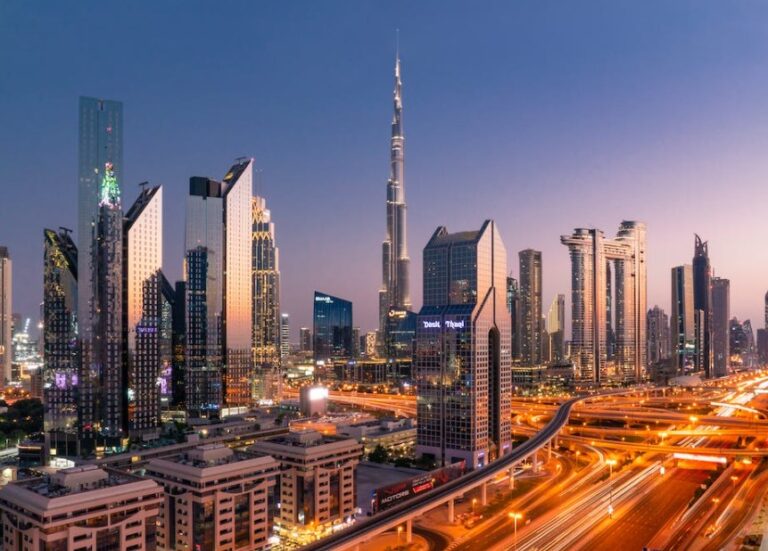In today’s rapidly advancing world, technology is revolutionizing every aspect of our lives, including the buildings we inhabit.
From sustainable construction to interactive design, these technologically advanced buildings are pushing the boundaries of what is possible in architecture.
Now, we will check the world’s top 7 most technologically advanced buildings.
Table of Contents
The Edge by PLP architecture
The Edge in Amsterdam is the ultimate champion of eco-friendly office buildings worldwide. They’ve got all these super gadgets and gizmos that make it energy-efficient and a total dreamland to work in.
The Edge snagged the title of the world’s greenest building, certified by BREEAM, a British rating agency. They practically gave it a gold star for sustainability.
And get this: they’ve decked it out with around 28,000 sensors. These sensors keep tabs on everything – movement, light, temperature, even humidity. It’s like the building’s got its own digital brain, all wired up and ready to rock. Just imagine this “digital ceiling” making the place as smart as a whip.
Taipei 101 Tower by C.Y. Lee & Partners
Taipei 101 Tower held onto its title as the tallest building on the planet for a solid six years. It’s like a blend of mind-blowing architecture and cutting-edge wizardry.
Picture this: they’ve equipped it with some fancy earthquake-fighting tech, a real-life magic trick called a tuned mass damper to keep those gusty winds in check, and a super-smart energy-saving system.
It’s also quite green. Like, they have got the LEED Platinum Certification thing going on. So, in a nutshell, the Taipei 101 Tower isn’t just a bunch of concrete and steel; it’s like a modern-day marvel that’s taller than most and greener than your neighbor’s garden.
Apple Campus 2
Apple Park, or you might have heard it called Apple Campus 2, is like a total showcase of awesome design and tech wizardry. They’ve got these solar panels –some of the biggest ones you’ll ever see – right there on the premises.
Apple projects its maximum energy use across the entire 5.9m sq ft (548,000 sq meters) campus – including office spaces, research centers, parking structures, and other buildings – to be around 142,000,000 kilowatt-hours per year. The campus is powered by 100% renewable energy.
And that’s not all – they’re all about keeping things fresh and airy, so they have these cool ventilation systems that keep the place breezy. And they’re all over that natural lighting and a central courtyard that promotes collaboration and creativity.
The Jeddah Tower
Have you heard about the Jeddah Tower? It’s this massive skyscraper they’re building in Saudi Arabia, and it’s going to be the tallest building on the planet! This building is a sight of beauty incorporated with wonders of technology.
They’ve got this slick façade that’s designed to contribute to energy efficiency by minimizing solar gain and reducing cooling loads. Plus, there is some seriously advanced structural stuff going on behind the scenes—the men behind the architecture of this building are Adrian Smith + Gordon Gill.
Read also: The Line, the futuristic city under construction in Saudi Arabia: hell or paradise?
Willis Faber & Dumas building
The masterpiece designs of famous architect Norman Foster is itself a wonder of the world. Another significant example is the Willis Faber & Dumas building in Ipswich, England.
Begin with the beautiful rooftop restaurant and chill garden to take the fresh air, it holds nature within. The building is dressed in a slick glass curtain wall, which provides a modern, high-tech building ahead of time.
Although swimming pools are common in multistoried buildings, the one in Willis Faber & Dumas is huge and breathtaking. It has mood lighting and keeps things comfy with their climate control magic.
Burj Khalifa
The Burj Khalifa is more like a symbol of luxury rather than just a building. It holds the position of the tallest building with all sorts of luxury and is a great example of a master architect.
Burj has a sophisticated water management system–the smartest one. The irrigation system collects water from the condensation from the air in order to water the landscaping.
Burj Khalifa has an environmentally friendly approach to waste management. It doesn’t hook up with the municipal sewage system but ensures efficient and environmentally friendly disposal.
Bahrain World Trade Center
The Bahrain World Trade Center is an architectural icon that integrates sustainable design and renewable energy. The building incorporates three wind turbines between its twin towers, which generate clean energy to power a significant portion of the building’s needs. It exemplifies how technology can harness to create environmentally friendly structures.
These technologically advanced buildings not only showcase the latest advancements in architecture and engineering but also set new standards for sustainability, energy efficiency, and user experience. They serve as inspiration for future projects and demonstrate the potential of technology to shape the buildings of tomorrow.
Read more: The 7 most technologically advanced countries in the world












